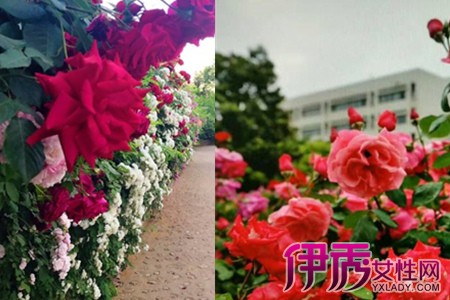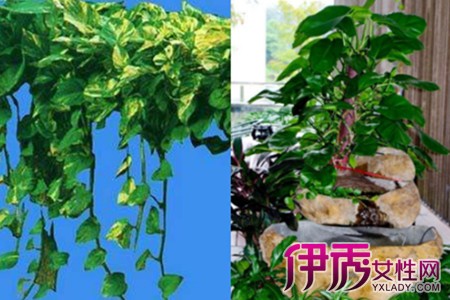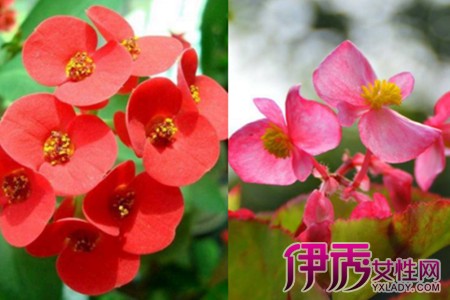Rose cuttings are not difficult. You have to know these points.

The rose stems are thorny, similar to roses. Common rose color is pink, magenta, red, petals also have many kinds, because of the characteristics of easier breeding and popular, and now this season is almost the time when roses bloom. Rose propagation is generally used for cuttage, although simple, but there are still some points, we can not help but pay attention to.
For rose cuttings, the most important thing is the soil used for cuttings. The selection of soil is related to the future development of rose flowers. If the soil is selected correctly, it will be half successful. The soil selected should not be too dry, too wet, too soft, or porcelain solid. Porcelain soil will hinder the growth of rose roots, and even lead to the death of rose cuttings.
After cutting into the appropriate soil, but also to maintain the required temperature. Because it had just been cut into the soil, it did not have a foundation, so it needed special care. Put it in the sun regularly every day, but not in the sun. It is best to keep the temperature at about 22 degrees.
In addition to these, it is also necessary to water the roses that have just been cut. Too much watering will cause the soil for breeding roses to be too thin, and even lead to the decay of rose branches. Too little watering will lead to water shortage in the branches of roses, which is not conducive to the growth of roots. It is best to water once or twice a day. When watering, do not let the water overflow the flowerpot and keep the soil slightly moist.
Under careful care, generally in about ten days, the cutting rose basically issued a new bud. At this time, the roots of roses are also slowly growing out. It is necessary to ensure that the sprouts and the stems of roses used for cuttings are not destroyed by animals or humans, otherwise all previous efforts will be wasted.
The best time and techniques for rose cuttings
Flower bonsai network guide, today's flower bonsai network guide Xiaobian for everyone to share is about the best cutting time and skills of rose, let's take a look.
Appropriate cutting time:
Rose using different branches cuttage, cuttage time is not the same drop:
Softwood cuttage method: April and September of each year, September, at this time rose branches active strong, vigorous growth, appropriate temperature, can be selected rose twigs for cuttage.
Hardwood cuttage method: from rose dormancy period to spring germination can be cuttage, cuttage to control the temperature.
Sprouts: The best season for sprouts is spring, when new buds are just sprouting.
Unsuitable cutting time:
Rose cuttings to avoid the summer high temperature period, at this time it is difficult to sprout, and high temperature and high humidity weather, it is easy to lead to the breeding of bacteria, cutting success rate is not high.
Cuttings:
Cutting as far as possible to retain three to five leaflets, conducive to rooting, cutting attention to moisture.
Cultivation and management techniques of Rosa chinensis
1. Varieties and habits of roses
1. Varieties of rose
The classification of roses is very complex and controversial for many years. They can be roughly divided into the following types:
(1)hybrid rose
This type of variety has the highest ornamental value and is distributed all over the world. The leaves are thick green, mostly shiny, and the buds are long. Flower whorls are large and plump.
(2)Rosa abundanta
Rich in color, but slightly smaller in diameter, flowers clustered and concentrated opening. Every flowering season, colorful flowers, can fully reflect the beauty of the group. In addition, there are strong flower rose, miniature rose, vine rose and other varieties.
2. Ecological habits of roses
Rose is a deciduous plant originating in temperate zone, which has certain cold resistance. It needs to be buried in most areas of northern China to protect it from winter. In other areas, it can be overwintered naturally in the open field. It likes sunshine and has no strict requirements for the length of sunshine. Therefore, it can bloom continuously. It stops growing more in midsummer and blossoms less. In winter, if it enters the high temperature greenhouse, it will be evergreen and continue to bloom, but it will be unfavorable for the growth of the next year. The soil requirements are not strict, like neutral and good drainage loam and clay loam, can withstand weak alkali. Poor growth in sandy and acidic soil, fertility tolerance, need to regularly supplement fertilizer to keep flowering.
2. Cultivation methods of rose flowers
Rose culture is mainly nutrient culture, can be cuttage, grafting, ramets, layering, etc., cuttage, grafting application most.
1. Cutting culture
Rose cutting culture, first of all to do a good job cutting hotbed preparations, to fill in the hotbed brewing materials, such as horse manure or leaves, watering compaction, will produce-set heat. Cut the semi-lignified branches with backward flowers from the mother plant of rose, the length is about 10 cm, the general branches have three bud eyes, all the leaves at the lower part of the cuttings should be cut off, only the top two leaves should be left for photosynthesis, the leaves should not be left too much, the nutrients in the stem and evaporation of a lot of water, the base of the cuttings should be cut into "horseshoe" oblique shape, put in the clear water basin to prevent air-drying, and cut in time. Rooting rose the most suitable temperature 20--25℃, generally 8℃ above the ship can start rooting. If the ground temperature is lower than 8℃ in winter, it is difficult to take root after cutting. When the spring temperature rises, in addition to paying attention to the bed surface spray, do not ignore the moisture of the bed, otherwise due to lack of water, cuttings wither, and even rooted seedlings will be dried to death. The method of examining the substrate is to insert the hand into the soil at a depth of 8- 10 cm and take out a little. If the hand is kneaded into a group, it indicates that the moisture is appropriate. If the hand is not kneaded into a group, it indicates that the soil is short of water.
First, stick a hole with a wooden stick, then press the cuttings in the sand hole by hand, the depth of insertion is 1/3 of the cuttings, the spacing is appropriate if the leaves are not put together, after insertion, water with a fine spray pot in time, water thoroughly, sprinkle the bed sand and cover it with plastic film, shade for 1 week, spray the leaves 1- 2 times a day, heal after about 1 week, root transplantation can be carried out in about a month, the roots should be sticky mud, while digging and planting, Adding 1%-2% copper sulfate and 0.50% urea into the mud can not only prevent root rot but also promote seedling growth and survival. Before placing in the pot, pad the drain opening of the flowerpot with broken tiles, add mixed soil, plant the seedlings into the pot with soil, process and compact them layer by layer, irrigate them thoroughly once after planting, place them under the shade shed for 7- 10 days, move them to a ventilated sunny place, irrigate them thoroughly once a day after placing in the pot.
2. Grafting culture
Grafting is the main means of rose culture, grafting, rootstock selection is very important. Cuttings are abundant in source, easy to root, can adapt to local climatic conditions, and have good affinity with scions. At present, roses are commonly used as rootstocks in China. Dormancy grafting is often used branch grafting, in the spring leaf bud before germination. Bud grafting is often used during growth.
III. Cultivation and management of rose flowers
Rose cultivation can be divided into protected cultivation and open field cultivation.
1. Facility cultivation (potted plant)
Rose is a light-loving plant, but the light is too strong for bud development, but in the absence of sunlight growth, slender branches. Rose from germination to flowering about 45 days, the optimum temperature for growth of 15--25℃, in this temperature range of large and beautiful flowers, to 30℃ growth is slow, flowers above 30℃ become smaller, color becomes lighter, 2--3 years seedlings when the pot to prune roots, the old roots cut short to promote new roots, but not too heavy root pruning, planting attention to root stretch, plants correct, pot soil should not be filled, pot generally in the dormant period, rose growth exuberant, need more fertilizer, Change pots once a year or every other year, change pots in dormant period, after changing pots need to be watered twice. Spring, summer and autumn should be placed in sunny, well-ventilated and non-ponding sites.
After Qingming, it is a careful pruning of the rose out of the cellar. The strong branches of the rose shall be selected and left, and other branches, weak branches, cross branches and over-dense branches shall be cut off. The selected branches shall be selected from the base to retain 3--5 bud eyes, and all the branches above shall be cut off, so that the plants can absorb a large amount of nutrients from the soil and supply the leaf buds and flower buds left after pruning for long-term growth. Remember to prune after bud germination, pruning late affects the first flowering, requires consistent growth height, each plant can leave 3- 5 branches, up to 7 branches.
Potted roses do not dry do not water, water is watered thoroughly. Summer weather is hot, evaporation is large, potted plants should be watered more, especially in the evening 1 should be watered enough. Rose in the temperature of more than 30℃ when poor growth, flowering less, some people think it is insufficient fertility will apply more topdressing, but bad things. Midsummer season generally do not topdressing, only to grow healthy branches and plants to take thin fertilizer frequently, 1- 2 times a week, such as in the morning after 11:00 appropriate shade, after 4:00 in the afternoon and then sun, to avoid hot temperatures at noon, but also to make it withstand weak sunlight in the afternoon before noon, conducive to photosynthesis, for the next crop of flowers to accumulate nutrients. Fertilization can be applied after pruning, with 50% human feces mixed with 2% calcium superphosphate. In the middle of February, topdressing with 3% human excrement or 1% urea can be used. Urea can also be sprayed before rain and after rain. It is not suitable to fertilize when the new shoots are red. At this time, fertilization will cause young roots to be injured, so that the plants wilted or stopped growing. Therefore, special attention should be paid to it.
Rose should also be trimmed in the middle stage, mainly cutting off the budding branches of grafted rootstock, cutting off the residual flowers with leaves after flowering and thinning out redundant flower buds. After the first crop of flowers, the thin and weak flower branches will be cut off from the base, and the rest of the strong flower branches will be cut off from 2- 3 leaves under the residual flowers. The second crop of flowers can still be pruned by thinning weak branches, leaving strong branches and strong buds.
Rose also needs to be pruned once before wintering, but not too early. When pruning rose, not only should strong branches be selected, but also attention should be paid to uniform master-slave. 4- 6 strong branches should be reserved for large flower varieties. Each branch should be selected at 30- 40 cm to produce strong buds, and the upper branches should be cut off. For vine and vine varieties, old branches, weak branches and diseased branches are removed to cultivate trunk.
2. Open field cultivation
Roses planted in open field have developed roots, rapid growth, robust plants, slightly large flowers and high ornamental value. Cultivation measures are selected according to different types, growth habits and geographical conditions during management. Cultivation sites are selected with high terrain, sufficient sunshine, air circulation and slightly acidic soil. When cultivated, the soil is deeply ploughed and organic fertilizer is applied as base fertilizer. The planting density is 75 cm x 75 cm for upright varieties, 100 cm x 100 cm for expanding varieties, 40 cm x 50 cm for longitudinal varieties and 200 cm x 200 cm for rattan varieties.
4. Prevention and control of diseases and insect pests of rose flowers
1. Chemical control
(1)powdery mildew
A fungal disease that damages flowers in hot, poorly ventilated and humid environments. In the tender leaves appear like white powder phenomenon, called powdery mildew, available 600 times the solution of triadimefon or 400 times the solution of Tuijunte.
(2)black spot
Fungi harm, in the form of mycelium or conidia disk on the diseased branches or fallen leaves in the soil overwintering, the next spring water to produce conidia, mainly by wind and rain transmission, rainy, foggy, more dew weather conducive to spore germination, so easy to disease. When there are water drops on the leaves, spores can germinate and invade after 6 hours. In rainy season, the air humidity is high, which is beneficial to the cultivation of germs and the epidemic of diseases. Available 0.10--0.20 Baume of sulfur mixture, 50% carbendazim wettable powder 500--1000 times solution spraying leaves.
2. Comprehensive prevention and control
To eradicate the pathogen early, pruning is carried out once in early spring in early April before the tree vigor is active after the rose is out of the cellar, and spraying Baume 0.50--1 degree stone sulfur mixture comprehensively and carefully (including the soil of the plant basin and the surrounding field) before the rose sprouts.
Plant regular spraying control, available 75% wettable chlorothalonil 500 times solution and 18% multi-bacterial copper 150 times solution sprayed once every 10 days, such as rain after spraying, spraying in time after rain, spraying time is 6- 9 months often spraying, control the occurrence of black spot disease.
(Source: Agricultural Science and Technology and Information, Issue 8, 2003)
- Prev

Understand how green pineapple raises flowers and will no longer have yellow leaves and dry roots.
Speaking of green pineapple, we are no stranger, many people like to put a pot of green pineapple on their desks. But some people do not know the cultivation method of green pineapple, so they will yellowing the leaves of green pineapple. The following editor will share with you the correct breeding method of green pineapple.
- Next

Learn how to raise four Seasons Begonia to make the bedroom flowers bloom for four seasons.
Four Seasons Begonia is a flower that blossoms all the year round, and it can be raised in several pots at home as long as the breeding method is correct in both the south and the north. Some friends do not know how to raise crabapple in four seasons, but they envy them when they see this kind of flower in other people's house.
Related
- Fuxing push coffee new agricultural production and marketing class: lack of small-scale processing plants
- Jujube rice field leisure farm deep ploughing Yilan for five years to create a space for organic food and play
- Nongyu Farm-A trial of organic papaya for brave women with advanced technology
- Four points for attention in the prevention and control of diseases and insect pests of edible fungi
- How to add nutrient solution to Edible Fungi
- Is there any good way to control edible fungus mites?
- Open Inoculation Technology of Edible Fungi
- Is there any clever way to use fertilizer for edible fungus in winter?
- What agents are used to kill the pathogens of edible fungi in the mushroom shed?
- Rapid drying of Edible Fungi

